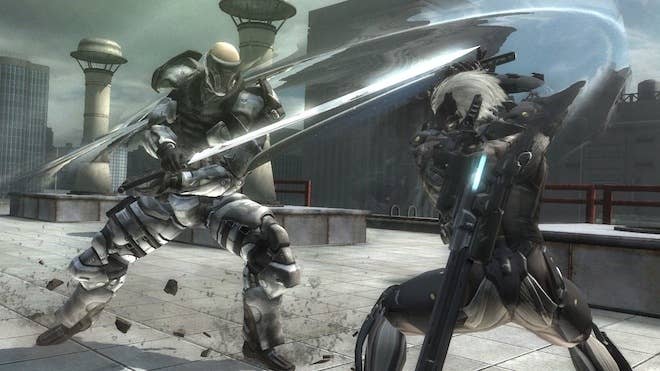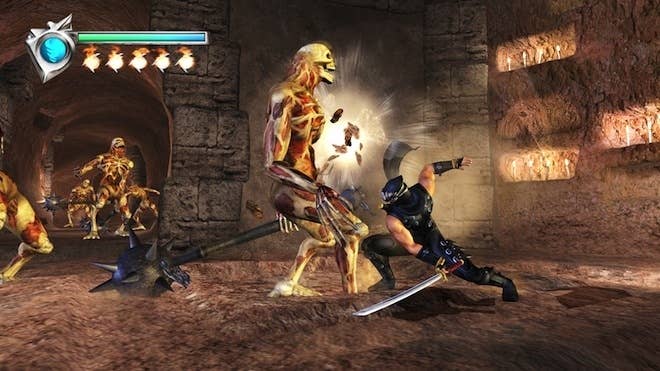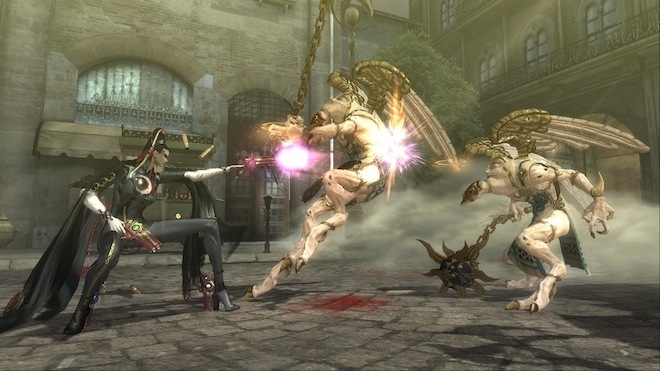
I actively dread the moment during the discussion of a game when I must refer to it by genre. "First-person shooter," "action RPG," "puzzle platformer": These terms feel so clumsy and dated, so foreign to what the actual experience of playing a game is like, that they very nearly impinge on the discussion itself. It's like being forced to refer to Dirty Projectors as alternative rock, or Moonrise Kingdom as a dramedy. It just kind of makes your skin crawl.
I don't think people who buy more than five or six new games a year even consider these categories at all. Instead, they have a complex, interconnected mental map of related games, and within this map the units of measurement are much smaller clusters of three to ten games that you might call micro-genres. Unlike the big categories, which never seem to die, the micro-genres have clear life spans: innovation and creativity, polish and recognition, oversaturation and irrelevance.
So, we might talk usefully about the Early 3-D Hub-Based Platform Games In The Style of Mario 64 (Banjo-Kazooie, Conker's Bad Fur Day, Ape Escape), or Open-World Role-Playing Games with Character Customization (Fallout 3, Skyrim, the Fable games) or, more recently, Hyper-Violent Shooting Games With an Ambivalent Message about Violence (Spec Ops: the Line, Far Cry 3, Hotline: Miami). I'm relatively sure when gamers say they are a fan of one of the big genres, they are actually saying they like one or more of the micro-genres that we group under that banner.

One of my most cherished micro-genres is something that I will call, from now on, the Mashy-Mashy-Jumpy-Jumpy Japanese 3-D Impalement Parade. The bedrock of this microgenre is 2002's Devil May Cry, which established most of the tropes of the type: nauseatingly fast gameplay, rampant violence so stylized as to be inoffensive, a soundtrack that is at least 75% guitar solos, bizarre and campy art, a daunting degree of difficulty, and, as you might have guessed, a tongue wedged decisively in its cheek. (The hero of Devil May Cry is Dante, who looks like the tormented spawn of Brett Michaels and Anderson Cooper, owns twin handguns named "Ebony" and "Ivory," and is second in Google search results to Alighieri, for the time being.) MMJJJ3DIPs preserved the precision and difficulty of the old '80s Japanese action games, and looked incredible doing it.
The greatest MMJJJ3DIP, for me, is 2004's Ninja Gaiden. A remake of the legendarily frustrating 1988 Nintendo game of the same name, Ninja Gaiden balanced its misanthropic difficulty with tools of movement so swift, responsive, and precise as to eventually overcome it. If most games are second-grade teachers, doling out stars and lollipops for participation, Ninja Gaiden was an unappeasable sensei, responding to petty accomplishments with scorn, expressing approval with a grunt and a smirk, maybe. Beating it was transcendent, like comprehending a koan.
Unfortunately, since this high point, MMJJJ3DIPs have been slipping into irrelevance. The Ninja Gaiden sequels were average and then terrible. Devil May Cry, until being rebooted (to solid notice) last month, followed the same trajectory. The God of War games (no, MMJJJ3DIPs do not have to be Japanese) are spectacular and polished, but button mashers. Today, even a very good new MMJJJ3DIP — like 2010's Bayonetta — has trouble becoming anything more than a minor success, at least in North America and Europe.

The new game in the venerable Metal Gear Solid series is a MMJJJ3DIP called — I'm serious — Metal Gear Rising: Revengeance. (That's as opposed to Metal Gear Rising: Vengeance, or Metal Gear Rising: Passive Aggression. Are they trying to sell this game?) The obvious question: Why in the world would a marquee gaming franchise known for creating its own fertile microgenre (paranoiac stealth action) rebrand itself as a MMJJJ3DIP?
Well, to start with, it began development in 2008, when the microgenre was still in its oversaturation phase (anyone remember Heavenly Sword? Er, me neither). Also, the Metal Gear series, which has always been proudly camp, is a slyly great stylistic fit for this group of games.
Developers Platinum Games ramp up the camp to an even higher pitch than in the proper Metal Gear series. The hero, Raiden, is a beautiful white-haired cyborg who wears what appear to be high heels and a robotic thong. The game nigh-worships every striation and sinew in his metallic body, like some weird collaboration between Body Works, Robert Mapplethorpe, and Cyberdine Systems. Raiden is constantly, and I mean constantly, penetrating other male cyborgs. The basic unit of gameplay in Revengeance involves running up to a muscular, grunting cyborg, chopping at him in slow motion for 20 to 30 seconds, then removing and swallowing his spine. Again, I'm serious. If you haven't guessed, this game is actually hysterical, often intentionally. Early on, after another cyborg chops off Raiden's arm, he screams, "Not again!" Later, he wears an enormous sombrero in Mexico. It's for camouflage.
The plot is also a scream. Raiden is the head of security to the prime minister of Liberia, naturally. Mr. Prime Minister, who is attempting to wrest control of his country from the metal digits of a cabal of profiteering mercenary war-borgs, is murdered in the first level. After this, the game becomes the story of Raiden's "revengeance" against the badduns, who are all bad for incredible reasons. An actual boss fight takes place against a female cyborg whose mercenary bloodlust seems to have been honed in the aftermath of the Algerian War. I'm not making this up, OK?
All this going-for-it is to be commended, and made me want to like Revengenace so, so much. Unfortunately, as a thing you play, it's not very good. You spend most of your time in the game dashing around in something called "Ninja Mode," waiting for the two or three seconds in which you can slow down time using something called "Blade Mode" to slash the ever-living circuits out of things. Unlike the best MMJJJ3DIPs, you never feel like the combat has the nuance and logic of a fighting game. (My X beats your Y, etc., etc.) The minute-to-minute experience of the game feels somehow both too simple and too convoluted. It's laudably fast, but the camera is never where it needs to be, which will lead to you screaming, even though you are an adult, "CHEAP." Yes, it looks shiny, and there are very neat things that happen, like jumping from rocket to rocket in slow motion to ascend to a helicopter, and then cutting off its rotors. But MMJJJJ3DIPs have been doing neater things for a long time. Because it is a Metal Gear game, and because it is so delightfully strange, Revengeance is a worthy curiosity, but even if it had been released in 2008, it would have been a middling example of the micro-genre.
And even if Revengeance had been a better game, it would have felt dated. The real problem for the MMJJJ3DIP is the nascent micro-genre that has taken swordplay and made it feel modern. The Souls series (2009's Demons' Souls and 2011's Dark Souls) trade speed and hyperbole for weight and physical realism. Every gesture in these games has a cost, and as a result, if you want to be good, none are wasted. You gain a greater sense of accomplishment from outdueling a single human foe in the Souls games than at chopping to bits a nuclear-armed giant robot in Revengeance. In this way, in spirit, the Souls games are very close to Ninja Gaiden: stern and punishing, but transcendentally rewarding.
So don't mourn the end of the MMJJJ3DIP; it had its time. Rejoice in the rise of the Super Slow Nerve-Wracking Minimalist Japanese Fantasy Swordplay Game (SSNWMJFSG). Just don't expect it to stay on top forever.

